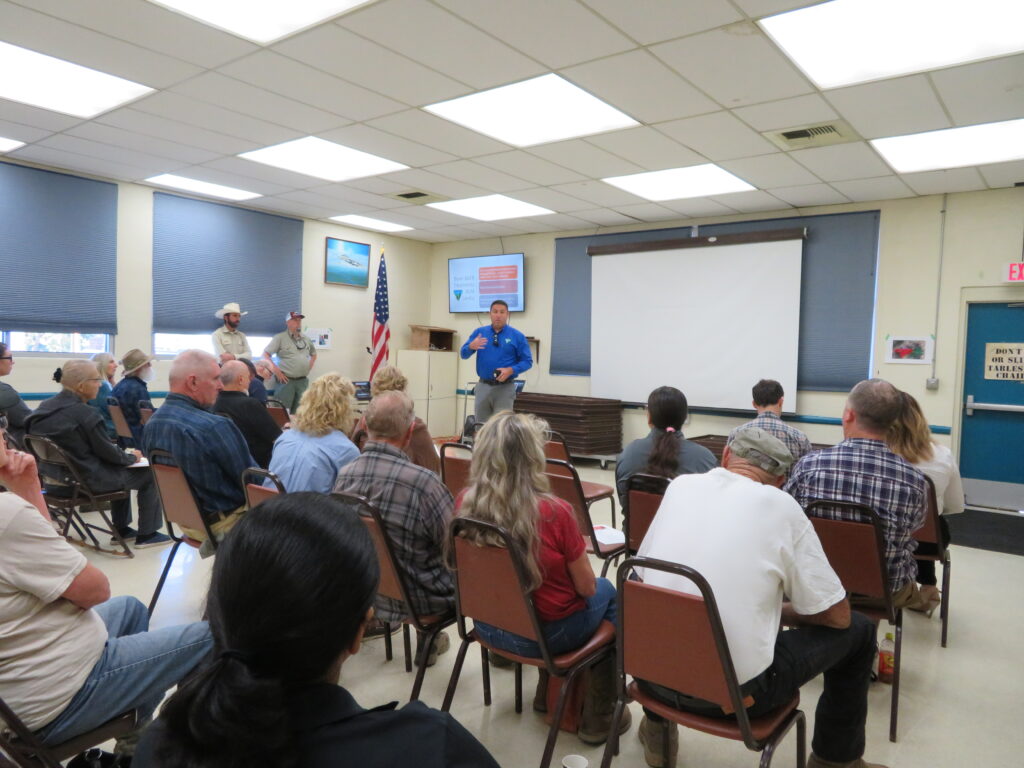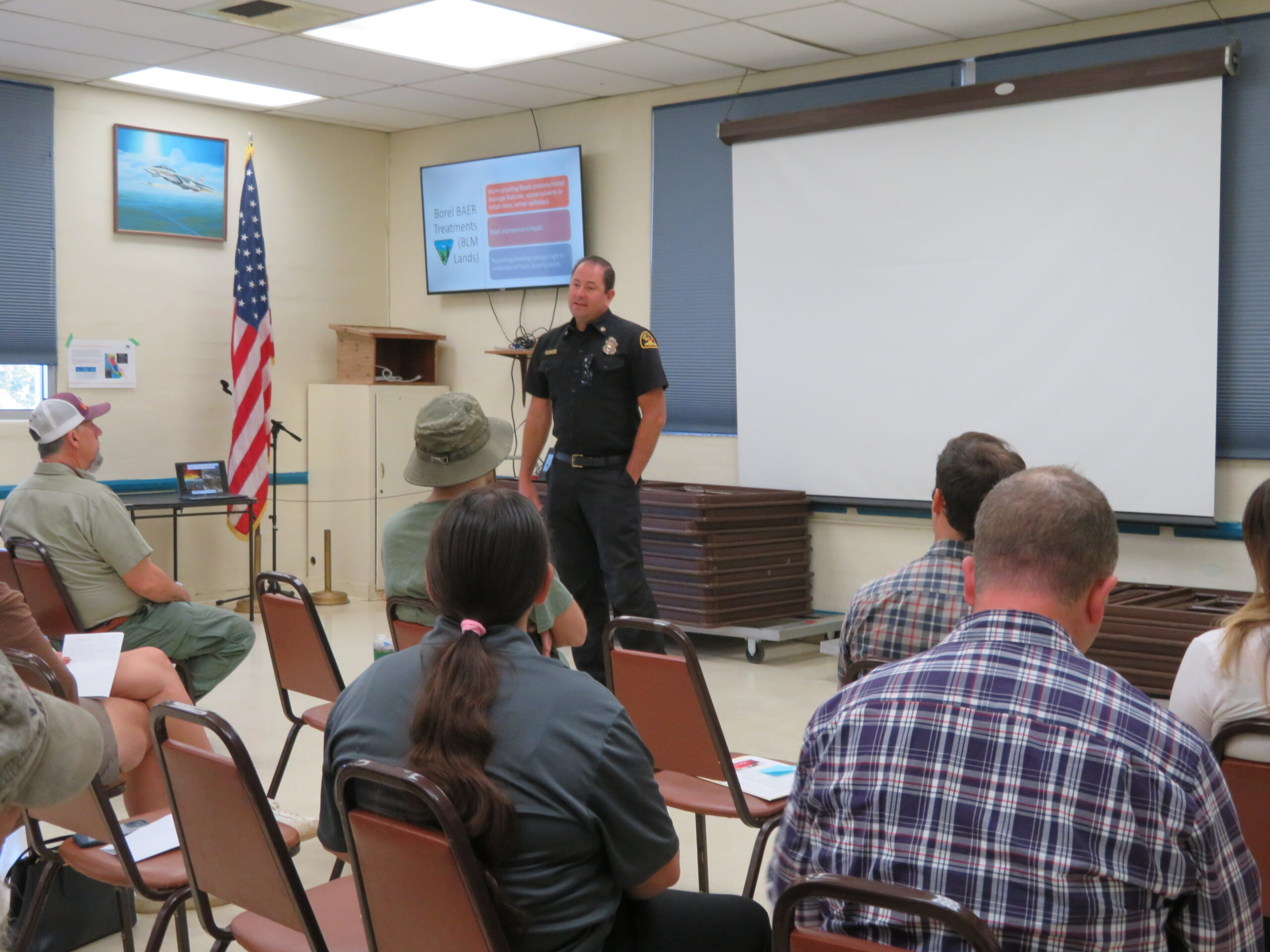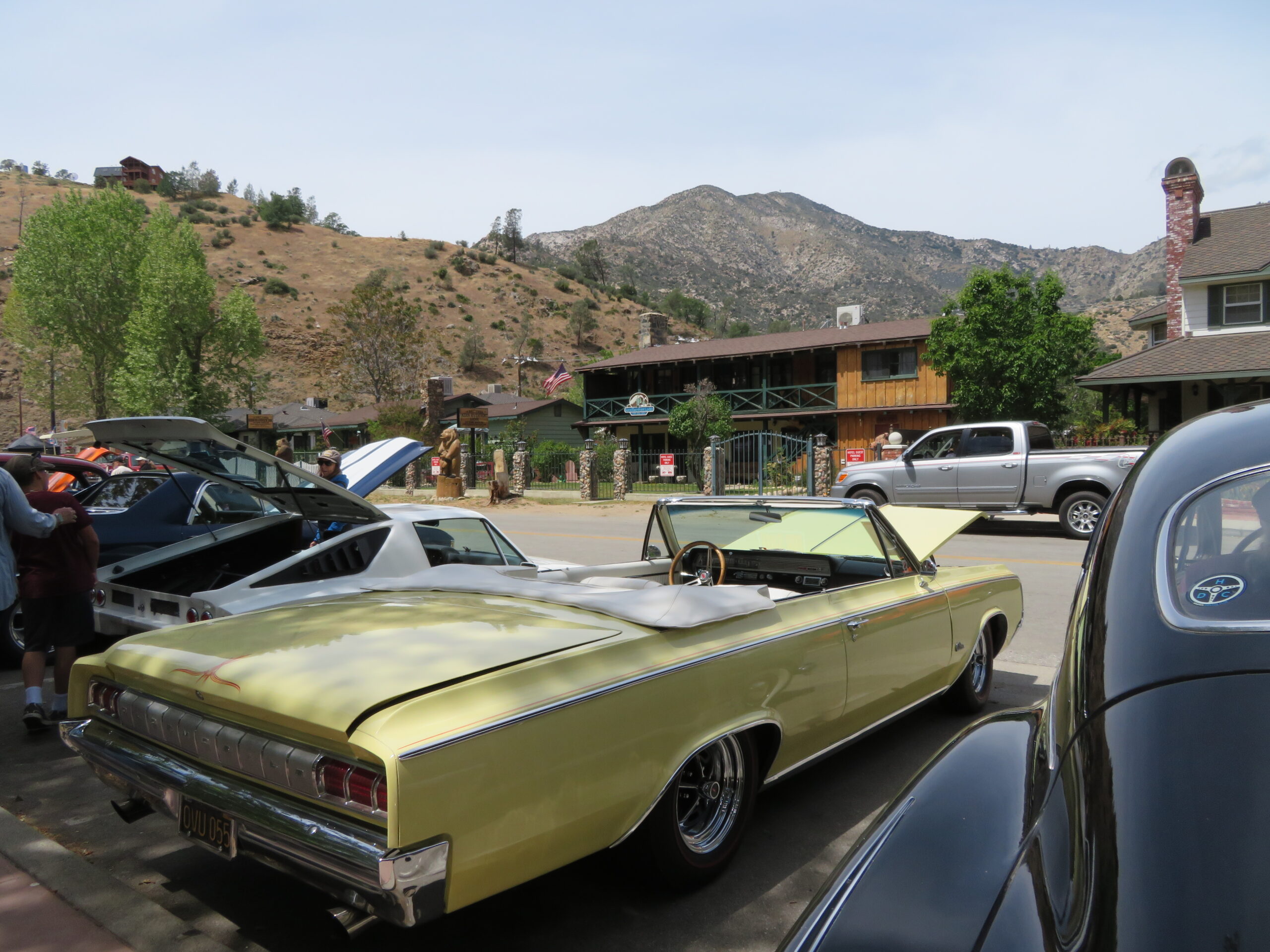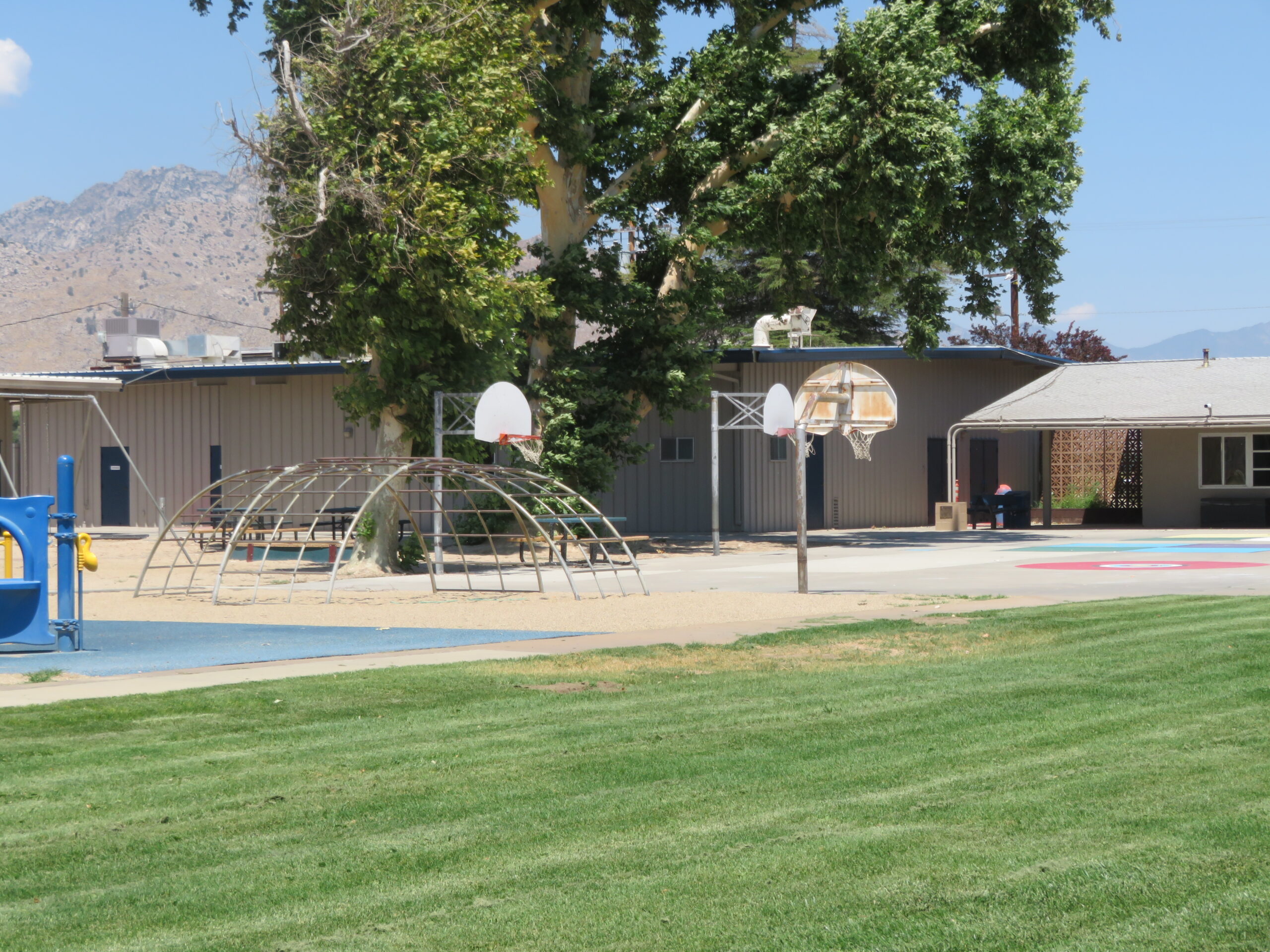Kern County Fire Department, air and wild land division chief Andrew Kennison. Photos by Catherine Stachowiak
Several agencies spoke during a post fire workshop for communities affected by the Borel Fire. The workshop titled “The Fire’s Out! Now What?” was held, Thursday September 12, at the Kern River Valley Senior Center in Lake Isabella.
Gabe Garcia, the field manager for the Bakersfield office of Bureau of Land Management (BLM) was one of the speakers. He said, “We’ve been working with Forest Service on this fire ever since the initial start. Where we fit in, about 11,000 acres of the fire was BLM land. “
BLM was one entity with Forest Service on the team collecting data. They put in a request a couple of weeks ago for funding and would be able to get some work done in areas that have potential debris flow around Havilah and clear out and upsize culverts to prevent any potential debris flows from impacting nearby private properties.
According to Garcia, they also plan to improve road ingress and egress with roadways in Havilah area.
The BLM will be requesting funding for years to come to better position themselves for replanting at steep slopes of BLM land. Some of the BLM land in Havilah is landlocked and BLM will have to ask permission from private property owners to access properties.
The first priority would be assessing culverts within the following couple of weeks.
Havilah residents may call BLMs mainline to inquire about these issues, Garcia said.
Cal Fire Watershed emergency response team did a very high-resolution analysis of the area according to the workshop speakers.
Debris flow issues can exist for about three to five years after a fire. The area will become habitable though residents will need to keep tabs on debris flows during storms. BLM will be planting vegetation nearby to better prevent debris flows.

Kern County Fire Department, air and wild land division chief Andrew Kennison was also a speaker at the workshop. He said, “We worked with the work team with the French Fire. We’re working with them on the Borel (fire.)”
Kennison manages the hazard reduction program, for which defensible spaces makes a big impact. He told the crowd in the audience about the Damage Inspection Team (report) findings. “We had a lot of structure loss in the Borel Fire. What you don’t often see is that a lot of those homes that were saved were stand-alone because of what the property owners do to prepare their properties for a fire.”
There’s three main components for making homes ready for a fire, fire fighters, landscape level projects, and the homeowners. “We rely on property owners to prepare their defensible space,” he said, in order to home harden and make private properties safer.
Ways for a homeowner to prepare a defensible space is keep weeds mowed and trees trimmed annually, and keeping woodpiles and debris more than 30 ft to 100ft from houses. According to the chief some homes were saved because of the defensible space their owners created within 30 ft of their homes.
Kern County Fire Department also spoke about the Watershed Emergency Response Team (WERT) report during the event.
The NRCS posted this event, for the public, with the US Department of Agriculture.
Speakers were spread out, in 20 to 25 minute sessions, in progression. The event was open, so people were able to come, any time throughout the workshop.





